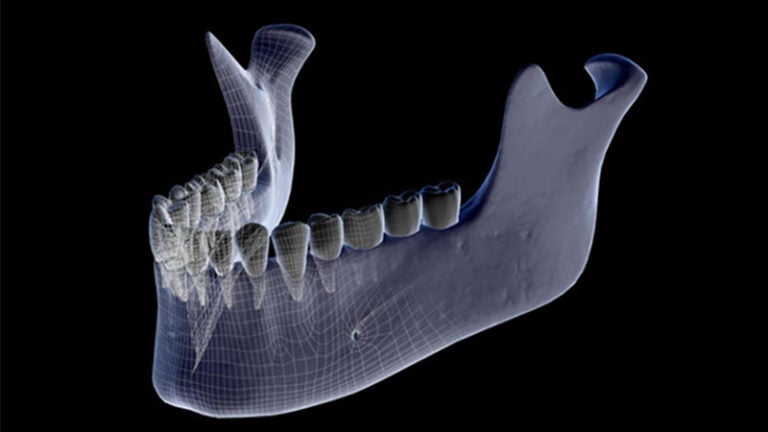
Research may prevent jaw damage from cancer and osteoporosis treatment
Researchers at USC Dornsife College of Letters, Arts and Sciences and their collaborators report a breakthrough to prevent jaw damage occurring in some people undergoing treatment for cancer or osteoporosis.
The newly published research is an important step toward a cure for osteonecrosis of the jaw, a rare side effect caused by drugs commonly used to combat bone loss.
Osteonecrosis is the result of severe and persistent inflammation that leads to loss of bone from the jaw. It currently has no effective prevention or cure.
The risk, though small, deters some people from taking drugs needed to fight bone cancer or prevent fractures due to loss of bone density.
USC Dornsife’s Charles McKenna, professor of chemistry at USC Dornsife, said the laboratory experiment, conducted in conjunction with researchers at UCLA, raises hope that physicians could adapt the new method to treat osteonecrosis in people.
“This is a condition that has been excruciatingly painful and difficult to treat for more than a decade,” said McKenna, who holds a joint appointment in the USC School of Pharmacy. “We think our new approach may provide hope for the future.”
Jaw damage: Cause and prevention
For years, physicians have prescribed a class of drugs called bisphosphonates (BPs) to treat metastatic bone cancer patients and to maintain bone density in osteoporosis patients. But when used in high doses in the cancer clinic, BPs sometimes have a side effect that causes necrosis in the jaw.
Although the condition is very rare at the lower BP doses used to treat osteoporosis, many patients are avoiding the drugs for fear of the side effects.
To solve the problem, McKenna and the team used a different, inactive BP compound locally in the mouth to push the active BP drug from the jawbone. The active drug continues its intended work in the rest of the skeleton.
The new technique isn’t ready for clinical use in humans. McKenna said BioVinc, a private company that specializes in bone-targeted therapies and diagnostics, will be responsible for advancing the treatment to commercial clinical use. BioVinc provided funding for the study via a National Institutes of Health small business research grant.
About the study
Other authors include Akishige Hokugo, Keiichi Kanayama, Shuting Sun, Kenzo Morinaga, QingQing Wu, Hodaka Sasaki, Hiroko Okawa, Courtney Evans and Ichiro Nishimura of the UCLA School of Dentistry and Frank H. Ebetino, Mark W. Lundy and Keivan Sadrerafi of BioVinc. Several of the authors of the study disclose a financial interest in BioVinc, including McKenna, who is the company’s academic founder.
The study was supported by NIH/NIDCR grants (1R43DE025524, 2R44DE025524, R01DE022552, R21DE023410), an NIH/NCRR grant (C06RR014529) and by USC Dornsife. Technical support was provided by the UCLA Translational Pathology Core Laboratory and Matthew J. Schibler of UCLA.